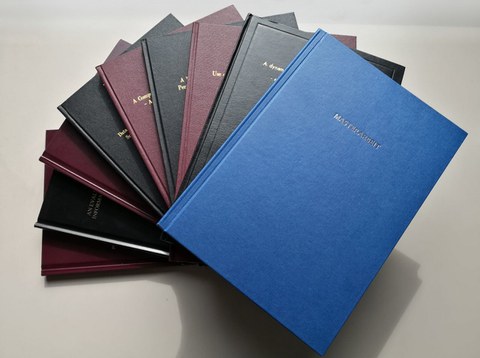16.03.2021
Verteidigung Diplomarbeit T. Hildebrand, 26.03.2021; 9:00 Uhr (CET)
Einladung zur Verteidigung der Diplomarbeit
Thema:
Untersuchung der Messunsicherheiten bei Multi-Lidar-Windmessungen zur Bestimmung der Windressourcen
Zeit:
26.03.2021 09:00
Ort:
Nürnberger Straße 31a, 2. Stock, Raum 201
Aufgrund der Corona-Beschränkungen findet die Verteidigung für die Öffentlichkeit online unter folgendem Link statt:
https://webconf.vc.dfn.de/cib-biw-verteidigungen/
Studentin:
Frau Tabea Hildebrand
Verantwortliche Hochschullehrer:
Prof. Dr.-Ing. habil Karsten Menzel
Betrieblicher Betreuer:
Dr. rer. nat. Tobias Klaas
Frauenhofer-Institut für Energiewirtschaft und Energiesystemtechnik
Wissenschaftlicher Betreuer:
Dipl.-Ing. Adrian Schubert
Sie sind herzlich zur Verteidigung eingeladen. Die Verteidigung wird in deutscher Sprache stattfinden.
Abstract:
The assessment of the wind resource for a potential wind farm bases on the evaluation of air flow. Aerosols are particles in the atmosphere that are assumed to move with the wind velocity. The horizontal wind velocity is crucial for the evaluation of a wind farm site. Originally, measurements were taken with an anemometer, which was attached to a measurement mast. In the early 2000s the development of remote sensing devices, namely the lidar technology evolved. The abbreviation stands for “light detection and ranging”. The technology is comparable with a radar. However, instead of emitting radio waves, the Doppler lidar emits laser light and analyzes the backscattered signal. The backscatter tells the gauging person the wind velocity and direction. A multi lidar system uses two or more devices to measure the wind speed by intersecting the beams at a specific point.
This Diploma thesis explores the uncertainty of multi lidar wind measurements. Basic research regarding the influencing uncertainty parameters is conducted and described in detail. Literature and existing models, as well as the development of own algorithms quantify the magnitudes of occurring uncertainties. The developed uncertainty model calculates values of error for 165 combinations of ten possible lidar locations measuring with two or three devices. The calculations imply that the most favorable measurement set up consists of three devices and that the standard deviation and mean value of the uncertainty is slightly reduced when comparing three-device combinations with a two-device set up. Another focal point of the thesis is the statistical analysis of one specific uncertainty, namely the return time. The time interval in which a laser comes back to one measurement point (after having scanned other points) characterizes the return time. The investigations imply that an equation from Kristensen et al. approximates the uncertainty values for higher return times quite well. Therefore, the equation is used in the uncertainty calculations to quantify the return time uncertainty.
The intention of this diploma thesis is the quantification of uncertainty of multi lidar systems for wind measurements. With the implementation of the uncertainty assessment, the initial step towards a tool also made for optimization of multi lidar measurement campaigns is completed.

